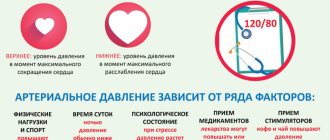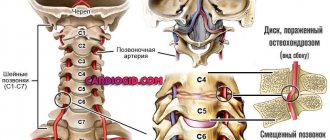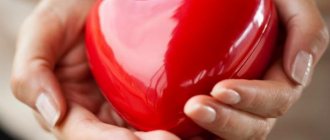The occurrence of arterial hypertension at a young age can be associated with stress factors, bad habits, obesity, hormonal disorders, and kidney disease. The disease is difficult to diagnose, since many do not feel an increase in pressure, and its surges are not always recorded. It is dangerous due to the frequent development of strokes and heart attacks. Treatment requires minimizing the influence of risk factors and administering drug therapy.
Features of the development of hypertension in young people
High blood pressure at a young age, as the main sign of arterial hypertension, manifests itself:
- In 90-95% of cases, as an independent disease, due to some pathological processes in the cardiovascular system.
- In 5-10% of episodes it acts as a complication of other diseases, for example, endocrine and renal.
According to medical statistics, of all cases of hypertension diagnosis, almost 12% occur in patients under 35 years of age.
Cardiologists identify several conditions of blood pressure in young people under 30 years of age:
| Blood pressure level | What do the numbers say? |
| Slightly below 120/80 | Optimal norm. |
| 120/80-139/89 | Prehypertensive state. |
| 140/90 130/80 (for diabetes mellitus, renal dysfunction) | Hypertension. |
| 160/100 | Stage 2 hypertension. |
When examining a patient’s body, specialists take into account the following points:
- If the increase in blood pressure is not frequent and episodic, then this indicates the presence of arterial hypertension.
- Constantly high blood pressure, regardless of the emotional background, indicates the development of hypertension.
The problem is further aggravated by the fact that in the event of a jump in blood pressure, young people do not particularly seek medical help, which is explained by the following:
- The initial stage of hypertension is characterized by asymptomatic progression.
- Insufficient follow-up of patients at risk of developing hypertension (hereditary predisposition).
- Improper lifestyle (drinking alcohol, smoking, drugs, stressful work activities, unhealthy diet, etc.).
Normal blood pressure indicators for 19-29 years old
What blood pressure is considered normal for people between 19 and 29 years old? Since the blood condition has an individual character, for the age category of 20-40 years, medicine determines the average norm of 120/80 units.
However, when measuring, it should be taken into account that a slightly reduced pressure to 100/70 in a young person can be considered a physiological norm.
| Age | Average normal blood pressure |
| From 19 years old | 117 by 77 |
| 20-24 years old | 120 by 79 |
| 25-29 years old | 121 by 80 |
Arterial hypertension in adolescence and youth
In recent years, the attention of researchers studying the problem of hypertension has increasingly attracted hypertension at a young age. This interest can be explained by two reasons. Firstly, an attempt to find the origins of the disease, which “apparently go back to that age period in which a person’s character and his higher nervous activity are most formed. And this period, undoubtedly, is childhood and youth” (A. L. Myasnikov). Secondly, the fact that in recent years there has been an increase in the frequency of hypertension in children, adolescents and young men.
Until recently, this disease was considered a disease primarily of adults, most often older people.
Analyzing the results of blood pressure measurements among students at the University of California, in 1920 Alvarez first suggested that blood pressure was more than 140 mm Hg. Art. for boys and 130 mm Hg. Art. for girls it is increased. However, only 30 years later this form of arterial hypertension began to be specifically studied and the opinion was formed that increased blood pressure in adolescents and young men (with the exception of symptomatic hypertension) is a temporary, transient disorder associated with age-related changes in the body. This form is called juvenile hypertension.
A significant increase in the frequency of this disease among young people in the 60s, several times higher than its prevalence in the 40s and 50s, served as the basis for research into the mechanisms of the formation of juvenile hypertension, its manifestations, and the characteristics of its course. The results of these studies showed that the pathogenesis of juvenile hypertension does not differ from the pathogenesis of adult hypertension; in particular, it was found that the basis for the increase in pressure during the onset of the disease is a violation of the normal relationship between cardiac output and peripheral vascular tone.
What are the causes of this disease in adolescents and young men? According to most researchers, the main role in the origin of hypertension belongs to nervous overstrain and negative emotions. It is well known that among adults, people in “nervous” professions are more likely to suffer from hypertension: teachers, telephone operators, telegraph operators, journalists, etc. Among adolescents and young men, its highest prevalence is observed in high school students and university students.
The cause of nervous overstrain at this age may be a heavy workload and difficulties in the curriculum. But the workload at school is the same for all children, and only some develop hypertension. Therefore, it is more correct to pay attention to the student’s extracurricular activities. Apparently, not all teenagers experience studying at a music school, learning a second foreign language, etc. without leaving a trace. to the detriment of physical education, sports, and recreation. Many tenth-graders, preparing to enter a university, study with tutors and then take exams twice during one summer. If a student’s work is irrationally organized, all of the above leads to overstrain of the nervous system and creates the preconditions for the development of hypertension.
Negative emotions, especially repetitive ones; also play an important role in the occurrence of arterial hypertension. In adults, such emotions cause troubles at work, at home, the loss of a loved one, etc., and in children, as a rule, a dysfunctional situation in the family (quarrels between parents, their divorce, etc.). Negative emotions can be caused by unequal attitudes of parents and teachers towards children that excite feelings of jealousy, difficult relationships with peers, and the wrong reaction of others to a change in the teenager’s character.
Heredity is of particular importance in the origin of hypertension in adolescents and young men, as in adults. If hypertension is observed in parents or other family members, then the likelihood of its occurrence in children increases. But it would be more correct to consider that “it is not hypertension as such that is transmitted to the offspring (for it is always the result of the influence of environmental factors on the body), but the characteristics of the human body that contribute to its development” (A. L. Myasnikov). These features include the structure of a person’s personality.
As a result of examining students using psychological tests, we found that hypertension occurs more often in adolescents with certain personality traits. Such people are prone to doubts and fears; they often find it difficult to make decisions, and before developing a line of behavior, they repeatedly weigh possible options. They are characterized by lack of confidence in their abilities, excessive concern about their health, and a low level of mood. At the same time, they strive to be the center of attention of others. The reaction of the cardiovascular system to emotional stress is associated with personality characteristics.
Other factors contributing to the development of hypertension in adolescents and young men include insufficient physical activity and bad habits, especially smoking. Thus, according to our data, among students with high blood pressure, 79.4% of boys and 29.7% of girls smoke, while among healthy students these figures are 49.3 and 11.7%, respectively.
Numerous observations of patients with hypertension confirm the fact that at a young age the disease most often occurs latently, asymptomatically and is diagnosed, as a rule, only with active detection. According to our data, 87.6% of boys and girls with high blood pressure did not know about it.
However, a careful study of the early manifestations of the disease shows that a combination of symptoms such as fatigue, headache, discomfort in the heart, poor sleep can be a sign of hypertension, although each of these symptoms in itself is nonspecific for this disease. To actively detect arterial hypertension in our country, all students, starting from the 7th grade, have their blood pressure measured during annual medical examinations.
The choice of treatment method for this disease is strictly individual, it is determined by the level of pressure, the patient’s condition, etc. In mild cases, this is the normalization of the daily routine (rational organization of work, adequate sleep, walks, exercise), the use of sedative therapy (drugs of valerian, motherwort , minor tranquilizers), in more severe cases - antihypertensive drugs, the selection of which sometimes has to be carried out in a hospital setting.
Some general principles for the treatment and prevention of hypertension can be recommended to everyone. First of all, you need to pay attention to the atmosphere in the family: it is necessary to spare the teenager’s psyche, protect him from influences that could aggravate his condition.
The daily routine is very important. The duration of sleep should be at least 9 hours a day (for boys 17-18 years old, at least 8½ hours). The organization of Sunday rest is of great importance. It is advisable that on this day the teenager devote his time to activities that are completely unrelated to his usual activities: sports games, work in the country, etc.
A hot breakfast is required in the morning. After school you should take a short walk. Lunch time should be as constant as possible, after lunch - rest for 1 hour (at this time you can do light exercises, read), then do homework, you should start with complex material, then move on to easier ones. After every 45 minutes of training, a 10-15 minute rest is required. Dinner must be no later than 19:00. In the evening, 2-3 hours can be devoted to sports, household chores, entertainment, but do not allow an oversaturation of impressions before bedtime.
Hypertension does not progress in all adolescents. As survey data show, its development can be delayed and even recovery can be achieved in 10-30% of patients. The key to this should be early detection of the disease and timely, persistent treatment.
Causes of increased pressure
A large proportion of the detection of hypertension in young people falls on urban residents, which is explained by the costs of a modern city. Pressure surges occur against a background of constant stress due to mental overstrain during study or are a consequence of a busy day at work for working girls and boys.
The development of hypertension at a young age is facilitated by reasons that can be both internal (congenital) and external.
Internal factors include:
- Congenital pathologies due to improper management of childbirth.
- Intrauterine anomalies in the development of a child.
- Hereditary predisposition to heart and vascular diseases.
- Gender (young women are more likely to develop hypertension than boys).
Acquired causes contributing to the appearance of hypertension include:
- Excessive consumption of salt and foods high in salt.
- Vegetative-vascular dystonia.
- Poor nutrition, habit of having dinner late.
- Unfavorable ecology.
- Excess body weight (obesity).
- Excessive consumption of tea, coffee, especially in the evening.
- Drinking alcoholic beverages.
- Sedentary lifestyle.
- Harmful working conditions.
- Diabetes.
- Weak tone of the vascular walls.
- Deviations in cardiac activity.
- Increased cholesterol levels.
- Insufficient physical activity.
- Potassium deficiency in the body.
- A sharp surge of adrenaline.
- Renal dysfunction.
- Hormonal imbalance.
- Nocturnal lifestyle.
- Sitting at the computer for a long time.
- Taking hormonal contraceptives.
- Intensive sports activities.
- Constant stress and nervous tension.
- Deficiency of vitamins and nutrients.
- Lack of rest and work schedule (constant rush).
It should be noted that young people are characterized by increased emotionality and sudden mood swings, which does not have a very good effect on the state of the central nervous system. Systematic violent reactions of the nervous system negatively affect the working functions of the heart. Against the background of incorrect cardiac activity, blood pressure begins to increase.
Types of hypertension and methods of treatment
After collecting anamnestic data from a conversation with the patient and laboratory tests, the doctor determines an individual therapeutic route. It depends on the duration and complexity of the disease, the presence of chronic diseases, drug tolerance, sleep patterns and nutrition of the patient.
According to the degree and duration of manifestation, hypertension at a young age is divided into 2 types:
- physiological hypertension , which is episodic in nature, disappears after eliminating the unfavorable factor (stress, excessive physical or mental stress);
- pathological hypertension of systemic manifestations , which occurs without obvious reasons. To determine the subtype (essential - root cause, secondary - accompanying symptom), laboratory screening is used.
To draw up a competent treatment regimen, it is important to find the reasons that caused high blood pressure in a young man.
During sports training, an increase in blood pressure of 25 mmHg is considered normal. Art., which is caused by the acceleration of blood circulation and the release of adrenaline into the blood.
Within 30-40 minutes, the indicators return to their normal “working” state. Physical activity should be present in the daily routine, but correspond to the individual characteristics of the patient and the doctor’s recommendations.
Prevention of hypertension during physical activity:
- comfortable, light clothing to prevent overheating of the body;
- a ventilated room with a constant flow of fresh air, which will prevent oxygen starvation;
- replenishment of moisture levels during training, it is better to use water or replace it with table mineral water;
- regularly measure blood pressure and pulse before and after training, use meters during cardio training.
Treatment of pathological hypertension depends on the cause of hypertension at a young age, where the main therapy is aimed at eliminating it, and hypertension is treated symptomatically.
The following is used in therapy:
- medications;
- surgical operations to remove tumors, cysts, insertion of stents into the vessel (renovascular hypertension due to fibromuscular dysplasia), plastic surgery for coartation of the aorta;
- a diet with a decrease in salty and fatty foods, avoiding alcohol during a hypertensive crisis.
Symptoms of the pathological condition
Hypertension in young people is not always accompanied by clinical signs - they mainly appear in older patients. Often, with regular jumps in blood pressure, a person becomes so accustomed to a slight ailment that he simply ignores the symptoms that signal abnormalities in the body.
The following symptoms are typical for high blood pressure:
- Migraine.
- Nausea.
- Dyspnea.
- Vomit.
- Dizziness.
- Chest discomfort.
- Nose bleed.
- Decreased vision.
- Sleep disturbance.
- Pulsation in the temples.
- Redness of the chest and face.
- Increased irritability.
- Swelling of the arms and legs.
- Tachycardia.
- Numbness of fingers.
- Cardiopalmus.
- Floaters before the eyes.
- Unreasonable anxiety.
If a girl or boy notices the manifestation of such signs, one cannot be calm about their presence. You need to consult a therapist, since lack of treatment will only worsen the situation and can lead to kidney and heart problems.
Treatment options
Many patients do not know what to do if their blood pressure begins to rise.
In order to choose an effective method of treating hypertension, it is important to establish and eliminate the factor that provoked the development of the pathology.
The specialist should explain how to self-monitor blood pressure and how to stop an attack of hypertension at home. Most often, in order to get rid of high blood pressure, complex therapy is prescribed using several techniques:
- medicinal – patients are prescribed medications of various groups;
- physiotherapy;
- therapy with folk remedies.
Drug treatment of hypertension
Sometimes, to get rid of hypertension, following simple recommendations is enough. This is especially true for patients at a young age (up to 20 years). If hypertension develops at the age of 30, taking medications is added to these tips. When prescribing medications, the dosage and duration of use are prescribed by the attending physician.
- Antihypertensive drugs – Captopress, Captopril.
- Diuretics – Furosemide.
- Medicines containing potassium - Asparkam, Panangin.
- Sedatives - valerian tincture, Novo-passit.
- Antispasmodic drugs – Papaverine, No-shpa.
With uncontrolled use of drugs from these groups, there is a risk of developing side effects, so they can only be taken as prescribed by a specialist.
If a hypertensive attack occurs unexpectedly, then it is necessary to alleviate the patient’s condition even before the ambulance arrives:
- place the victim in a comfortable position;
- warm the ankle joint;
- give the patient Valocordin or Corvalol;
- Avoid eating in this state;
- If a headache occurs, a diuretic should be given.
Physiotherapeutic methods of therapy
Carrying out such procedures is a great help in cases where the pressure is constantly rising. Treatment is aimed at stimulating active points responsible for the rate of blood outflow in the vessels. Thanks to this, it is possible to normalize blood microcirculation and reduce the load on the heart muscle.
- Galvanization
- the brain is affected by weak current discharges. - Electrophoresis
is the administration of medications using electric current. - Magnetotherapy
– low-frequency magnetic rays are applied to the brain. - UHF
- involves influencing the head with alternating pulse current. - Infrared radiation
– the left intercostal space is irradiated using a concentrated beam of light.
Despite the effectiveness of the procedures, physiotherapy is not suitable for everyone. Contraindications include the following conditions:
- hypertension 2-3 degrees;
- history of stroke;
- tuberculosis of any type;
- arrhythmia;
- myocardial infarction;
- poor blood clotting;
- cancerous tumors.
Traditional methods of treating hypertension
Folk remedies are an additional method of combating hypertension. In monotherapy they are absolutely useless, but in combination with taking medications they give excellent results.
- Lemon and honey
. Squeeze the juice of half a lemon and mix it with 1 teaspoon of any honey. Dissolve the resulting mixture in 200 ml of mineral water. Take a few sips of the product on an empty stomach. The course of therapy is 7-10 days. - Rye flour
. Take 1 s. Add a spoonful of flour to 2 tbsp. l. boiling liquid. Eat the resulting product on an empty stomach in the morning. - Cranberries with sugar
. Grind two cups of berries with 3 tbsp. l. powdered sugar. Use 1 tbsp daily. spoon one hour before meals.
What are the dangerous consequences of high blood pressure if left untreated?
Advanced hypertension at a young age is dangerous because it promotes the early development of pathological processes in important organs of the body. Target organs are particularly at risk:
- Heart.
- Kidneys.
- Brain.
Untreated hypertension at a young age is fraught with aggravation of the pathological process, which sooner or later will lead to serious consequences:
- Angina pectoris.
- Heart attack.
- Stroke.
- Loss of vision.
- Atherosclerosis.
- Memory loss.
- Kidney failure.
- Liver dysfunction.
- Disturbance of the spleen.
- Hypertensive crisis.
- Vascular encephalopathy.
- Oxygen starvation of the brain.
- Heart failure.
- Sudden death.
When a stroke occurs, hemorrhage occurs in the brain tissue, which leads to paralysis, impaired speech function and other irreversible disorders leading to disability.
Although an increase in blood pressure in professional athletes after intense exercise is considered normal, with constantly high blood pressure, the heart and blood vessels need additional oxygen and nutrients, which forces the heart muscle to work in emergency mode. In the event of a sharp increase in load, the vascular walls may rupture, unable to withstand the strong stress.
Drug therapy for hypertension
At the moment, there are a huge number of medications for blood pressure on the pharmaceutical market. But under no circumstances should you prescribe them to yourself.
Despite the proven effectiveness of a large number of drugs that help lower blood pressure, only a small percentage of the population receives adequate therapy. The reason for this is many different factors. Both attempts to reduce the cost of treatment by the patient himself, by refusing some of the prescribed drugs, and prescribing therapy to himself.
Another reason may be a short appointment with a doctor, which does not allow you to devote enough time to the patient. But, nevertheless, therapy should be prescribed in accordance with modern Russian recommendations for the prevention, diagnosis and treatment of arterial hypertension.
This therapy should help reduce blood pressure, as well as prevent target organ damage, reducing the risk of fatal events in the future.
Diagnostic measures
If hypertension is suspected in girls and boys, a detailed diagnosis of the body is prescribed, which makes it possible to determine the exact cause of the pathological condition.
Laboratory research:
- General blood analysis.
- General urine test.
- Blood sugar test.
- Blood test for protein and creatinine.
- Analysis of total cholesterol.
- Blood sodium level test.
- Potassium test.
- Determination of triglyceride levels.
- Analysis of high and low density lipoprotein cholesterol.
Hardware examination of the body:
- Ultrasound of the kidneys.
- Ultrasound of the cervical arteries.
- Ultrasound of the heart.
- Monitoring blood pressure throughout the day.
Diagnostic methods
In addition to the standard set of examination methods (ECG, general blood tests, urine tests, kidney tests, glucose, lipid profile), in-depth diagnostics are required for young patients to exclude symptomatic forms of hypertension:
- Ultrasound with duplex scanning of the kidneys and their arteries;
- and MRI with angiography, visualization of the kidneys and adrenal glands, pituitary gland;
- contrasting of the kidneys and ureters (excretory urography);
- urine and blood tests for catecholamines and their metabolic products, cortisol;
- determination of thyroid hormones in the blood;
- fundus examination.
Watch the video about ultrasound with duplex scanning of the kidneys and their arteries:
Therapeutic techniques for stabilizing blood pressure in young people
Is hypertension treatable at a young age? The degree of therapeutic effectiveness against this disease in young patients largely depends on the advanced stage of the disease and the presence of other pathological processes:
- In the presence of aggravating factors, treatment will be long-term using complex therapy.
- In uncomplicated forms, the disease is treated exclusively with non-medicinal means.
With moderately high blood pressure at 20-29 years old, when the tonometer systematically shows 130/80-140/90, in addition to prescribed medications, cardiologists recommend:
- Avoid alcohol.
- Stop smoking.
- Review your diet.
- Increase physical activity.
- Walk 5 times a week for 30 minutes a day.
Drug therapy for hypertension
The doctor selects the best medication options, taking into account the following:
- High blood pressure level.
- The degree of risk of complications.
For the treatment of arterial hypertension in 19-29 year old patients, drugs with different therapeutic effects are prescribed:
| Drugs | Name |
| Antihypertensive | Kaptopres. Enallapril. Captopril. |
| Diuretics | Lasix. Furasemide. |
| Potassium-containing | Panangin. Asparkam. |
| Sedatives | Valerian. Novo-passit. Persen. |
| Antispasmodics | No-shpa. Papaverine. |
If a person has other diseases, additional medications are prescribed, the action of which is aimed at suppressing these pathological processes.
Treatment with folk remedies
When arterial hypertension manifests itself at a young age, doctors recommend using unconventional therapeutic methods to normalize high blood pressure.
Decoctions, teas and infusions prepared from the following plants have a good healing effect:
- Mint.
- Melissa.
- Fireweed.
- Oregano.
- Calendula.
- Motherwort.
- Hawthorn.
- Rose hip.
- Raspberry (leaves).
- Viburnum (berries).
- Orange (peel).
Drinks can be prepared either from one herb or by combining several plant components. You need to drink at least 1-2 cups of the healing drink per day (1 tsp of raw material per 300 ml of boiling water).
Food products in the fight against elevated rates
If you are prone to high blood pressure, you need to pay close attention to your diet. The following have a beneficial effect on blood vessels and the body:
| Products | What is the benefit |
| Cottage cheese | The product is rich in magnesium, potassium and calcium. These microelements strengthen the heart muscle and expand the vascular lumen. |
| You need to eat 3-5 tbsp per day. cottage cheese. | |
| Bell pepper (red) | Contains an increased amount of vitamin C (reduces the likelihood of hypertension). |
| Add 2 fresh peppers to salads daily. | |
| Pumpkin seeds | Pumpkin seeds are rich in zinc. Insufficient zinc in the body increases the risk of heart attack. |
| To compensate for the deficiency of this substance, you need to eat 20 g of seeds daily. | |
| Salmon | The composition contains Omega-3 (fatty acids). Has a hypotensive effect. |
| You need to eat 150-200 g of salmon 3 times a week. | |
| Cocoa | The flavonoids present in cocoa have a positive effect on blood vessels and can help normalize blood pressure. |
| Drink 1-2 glasses of drink per week. | |
| Almond | Regulates the level of bad cholesterol. Contains protein, potassium, fiber, vitamin E and magnesium. Promotes weight loss. |
| Oats | Is a source of selenium. The regular presence of oatmeal with milk in the menu helps prevent not only an increase in blood pressure, but also blood sugar. |
| Green tea | Helps dissolve cholesterol plaques. Contains antioxidants that slow down the aging of the body. |
| Skimmed milk | The milk drink is rich in vitamins, calcium and potassium. |
| You need to drink 1 glass of low-fat milk daily. | |
| Black chocolate | The dark chocolate product contains antioxidants that improve heart function. Several pieces of a chocolate bar lower blood pressure by 5 units. |
If the patient is overweight, a special diet is recommended, which must be followed for a long time or throughout his life.
In case of episodic pressure surges, the following is entered into the menu:
- Avocado.
- Broccoli.
- Garlic.
- Pomegranate.
- Greenery.
- Turmeric.
- Watermelon.
- Asparagus.
- Herring.
- Pumpkin oil.
- Cauliflower.
- Olive oil.
- White cabbage.
These products should be regularly present in the diet of young boys and girls. However, if arterial hypertension has already become stable, then revising the diet will no longer be enough—medical assistance will be required. In this situation, doctors prescribe mild drugs.
Drugs of choice
Taking into account the predominance of the activity of the sympathetic and renin-angiotensin-aldosterone system in young patients, the following groups of drugs are recommended:
- ACE inhibitors - Moex, Quadropril (contraindicated when planning or pregnancy, narrowing of the renal arteries);
- antagonists of imidazoline receptors – Physiotens (indicated for overweight and impaired carbohydrate metabolism);
- Beta blockers - Lokren, Concor (not prescribed for obesity, physically active patients, athletes, and lung diseases);
- angiotensin 2 receptor antagonists - Cozaar, Micardis (can intensify migraine, impair kidney function);
- alpha and beta receptor blockers - Carvedilol (incompatible with alcohol);
- diuretics - Arifon, Hypothiazide (lead to loss of potassium and magnesium, disrupt metabolic processes).
Diuretics that lead to loss of potassium and magnesium disrupt metabolic processes
With any chosen drug, treatment begins with a minimum dose, it is gradually increased after 10 - 15 days of use. Therapy is considered successful if the readings are consistently above 110/70 and below 140/90 mm Hg. Art. The upper limit is reduced by 10 units in the presence of diabetes mellitus or renal failure.
Probability of being drafted into the army if you have high blood pressure
Regarding whether someone with high blood pressure is recruited into the army, it is necessary to take into account that arterial hypertension and hypertension are not exactly the same thing. Therefore, those guys who are diagnosed with hypertension are exempt from conscription.
You can get a deferment from the army for hypertension only if this disease is a clinical symptom of some other serious illness, for example, chronic renal failure, diabetes mellitus, etc.
| Stage of hypertension | Blood pressure indicators | Assigned Category |
| First | 140/90-159/99 | Category B (exemption from conscription). |
| Second | 140/90-179/109 | Category B. |
| Third | 180/110 | Category D (exemption from service in peacetime and war). |
Preventive actions
In order not to have to treat hypertension, it is important to prevent its occurrence. This can be achieved using basic recommendations:
- avoid stressful situations;
- eliminate the consumption of alcoholic beverages;
- give up bad habits (smoking);
- normalize sleep and rest patterns;
- eat foods with a high content of vitamins and microelements;
- spend more time in the fresh air.
According to statistics, if hypertension is detected early, the patient will have a positive prognosis. Therefore, when the first signs of hypertension occur, it is important to visit a specialist in a timely manner.
Estimated forecast
How long does it take people under 30 to recover from a blood pressure surge? The duration of the rehabilitation period is individual and depends on how high the blood pressure rose, what caused the jump, and how effective the treatment was.
The degree of favorable prognosis depends on how carefully the patient followed medical recommendations. If they are not attentive to their health and ignore prescribed therapy, young people risk developing heart failure by the age of 35, which increases the likelihood of stroke and heart attack.
To avoid such serious consequences, you should:
- Do not skip taking prescribed medications.
- Check your blood pressure regularly.
- Avoid increased physical activity.
- Eliminate stressful situations.
- Control your weight.
- Watch your diet.
- Don't exhaust yourself with dubious diets.
- Introduce healthy foods into your diet.
- Limit consumption of tea and coffee.
- Avoid high salt intake.
- Do not abuse alcoholic beverages.
- Eliminate fatty foods, smoked foods, etc. from your diet.
- Properly plan your work or school day.
- Night sleep should be complete (at least 8-9 hours).
Video on the topic
Possible reasons for high blood pressure in a young man:
If you have high blood pressure at 30, what should you do? It is important to lead an active lifestyle, monitor your diet and general well-being, so that arterial hypertension does not cause a change in your health group.
- Eliminates the causes of pressure disorders
- Normalizes blood pressure within 10 minutes after administration
Due to the influence of many negative factors (poor environmental conditions, stress, high physical activity), the risk of developing hypertension at a young age is very high. Typically, high blood pressure is diagnosed in men under 30 years of age. If the pathology is not treated, it can lead to serious consequences.
Prevention
Based on the cause, you can choose the right treatment; in addition, based on the factors described, you can conclude what kind of prevention is necessary. Initially, it is recommended to try to establish a hereditary factor. If the family already has or has had hypertension, then from the age of 20-30 you need to start using the prevention of pathology, which will prevent its development.
The main measures are:
- It is important to change your lifestyle, adhere to healthy rules, and also adjust your diet. You can use a diet for hypertensive patients or simply eliminate harmful foods, add more plant-based, dairy foods and foods that contain potassium, calcium and magnesium.
- Completely get rid of bad habits.
- Try to spend more time outdoors, a walk before bed is especially useful.
- Visit a doctor at least once a year for preventive examinations.
- Measure your blood pressure at home from time to time.
- Control body weight.
- Start playing sports or doing minimal physical activity, even morning exercises for 10 minutes will be useful.
The described measures must be followed, even if there are no hypertensive patients in your family. Such rules will be useful to any person to significantly reduce the likelihood of developing pathology.











